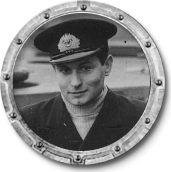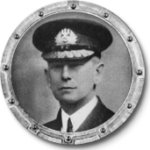
Polish Naval Memories of WWII
ORP Orzeł escapes the Baltic – 15th September – 14th October
Prior to the German invasion the Polish Navy submarine division had been mobilised as early as August 24th 1939. Three of the submarines were capable of mine-laying and managed to lay some but the speed of the German advance meant that each vessel soon had to find for herself. Their base, Gdynia, fell on the 19th September. Three submarines, two of them damaged, were interned in Sweden. Two submarines did escape from the Baltic Sea however. ORP Wilk, after patrolling and laying mines in the shallow waters of Gdansk Bay, no easy task, was ordered to the U.K. After being depth-charged Wilk, leaking oil, passed through the narrows on the surface and reached Rosyth with the last of her fuel. She was then refuelled and ordered to Scapa Flow, where the Royal Navy Home Fleet lined decks and gave three cheers for the gallant Poles.
The story of ORP Orzeł was even more remarkable. She operated for the longest time in the Baltic. However, she was attacked a number of times by German vessels and aircraft. By the 10th of September her captain Commander Kloczkowski had become ill, and also the vessel’s air compressor had failed. The damaged vessel called into the neutral Estonian port of Tallin on the 14th September, and her commander was rushed to hospital. Under pressure from the Germans the Estonians first delayed the Orzeł from sailing and then, because she had overstayed, interned her. Guards were posted and the vessel was disarmed, with the exception of some torpedoes, and all the navigational equipment and charts were taken. During the night of 17th and 18th September first officer Jan Grudziński took command. The guards were overpowered, port electrical installations sabotages and the wire moorings were cut. Under fire, but under cover of darkness, the Orzeł escaped. She dived to avoid depth charges, and made for the open sea. The navigating officer, Sub. Lt. Mokrski, drew maps of the Baltic from memory and despite having at times to lie on the bottom to avoid the enemy she hunted, albeit unsuccessfully, in the Baltic for 38 days. With batteries and water running low they decided to break out from the Baltic. The journey through the Kattegat was fraught with danger as they were hunted by destroyers, often having to dive and lay on the sea bed and the dangerous currents buffeted them. Out into the North Sea, without any recognition signals, and prey to friend or foe alike, the first Lieutenant was eventually able to make a faint signal in imperfect English and finally they were escorted to safety. This escape was of truly epic proportions.
Source: Poles Apart: Polish Naval Memories of World War Two by Martin Hazell














